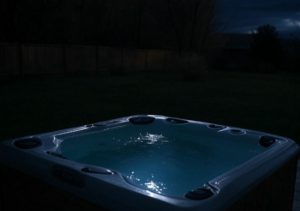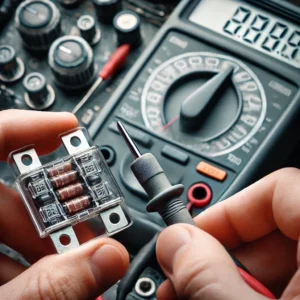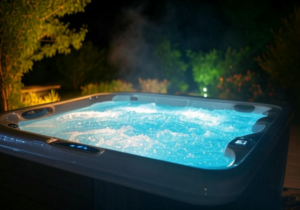What to Do When Your Hot Tub Loses Power: An In-Depth Guide
When your hot tub suddenly loses power, it can feel like a big blow to your plans for a relaxing soak. In this guide, you will learn everything you need to know about troubleshooting, repairing, and preventing power loss. We will break down the process into clear steps and use simple language to explain even technical details. You will find tables, diagrams, and expert tips that help you decide on the best course of action. Let’s dive in!
Introduction
Imagine settling into your hot tub after a long day, only to find it dark and unresponsive. It might be a power outage or a deeper electrical fault. This guide explains what to do when your hot tub loses power. We begin with basic safety rules and check simple things like the breaker and outlet. Then we move to more detailed troubleshooting of internal parts like the control panel, wiring, and pump. We will also compare different options and list factors that affect how your tub works after a power loss.
You will learn how to compare the pros and cons of each method in our tables, and you can see a diagram that explains the electrical system of your hot tub. We also share practical step-by-step instructions to fix the problem and offer expert tips to avoid future issues. This guide shows you not only how to restore power but also how to protect your tub in the long run.
Our goal is to help you work through the problem safely. Remember, safety comes first when dealing with electricity near water. If you ever feel unsure, it is best to call a professional. Now, let’s look at the details and explore all dimensions of what to do when your hot tub loses power.

Main Topic Exploration
Understanding the Electrical System
Your hot tub has a system made up of a power cord, circuit breakers, a GFCI outlet, a control panel, and internal components like pumps and heaters. These parts work together to keep your tub safe and warm. When the tub loses power, the first things to check are the circuit breaker and the GFCI outlet.
“Safety is the top priority when working with water and electricity.”
– Electrical Safety Foundation International
Initial Safety and Inspection
-
Safety First:
- Turn Off Power: Go to your main breaker panel and switch off the hot tub’s breaker.
- Avoid Wet Surfaces: Stand on dry ground and wear insulated gloves if you must inspect the tub.
-
Check the Power Source:
- Home vs. Hot Tub Only: Look around your home. Do other devices work? If not, you might have a full power outage.
- Inspect the Outlet: Use a voltage tester to see if the outlet gives power. Look for visible damage on the cord.
-
Examine the Circuit Breaker and GFCI:
- Reset the Breaker: Flip the breaker off and then on again.
- Reset the GFCI: Press the reset button on your GFCI outlet. If it trips again, this may signal a deeper fault.
Internal Hot Tub Inspection
If the basic checks do not restore power, the problem might be inside the tub.
-
Control Panel:
Look for error codes or flashing lights. A blank screen can mean a blown fuse or damaged wiring. -
Internal Fuses and Wiring:
Open the access panel (if safe to do so) and check for loose or burnt wires. Use a multimeter to check for continuity. -
Pump and Heater:
If the control panel shows power but some parts do not work, test the pump and heater. Sometimes, mineral buildup or worn parts can cause short circuits.
Comparative Analysis of Troubleshooting Options
Below is a table that compares common issues and their fixes:
| Issue | Symptom | Simple Fix | When to Call a Pro |
|---|---|---|---|
| Tripped Breaker | No power, breaker off | Reset breaker | If it trips repeatedly |
| Faulty GFCI | Outlet does not reset | Press reset button | If it fails to hold |
| Internal Fuse Blown | No display, dead control panel | Replace fuse | If wiring issues are visible |
| Pump/Heater Issue | Some functions work, others don’t | Clean or test components | If component remains non-responsive |
Expert Opinions and Evidence
Industry experts note that routine maintenance can prevent many common issues. Regular checks of the electrical panel and internal components can stop small problems from turning into major faults. Research by specialists at leading hot tub service centers shows that a systematic approach saves both time and money.
Performance Factors
Key Variables Affecting Power Restoration
Several factors influence how quickly and safely your hot tub can get back online:
- Electrical Integrity: The condition of wiring and connections.
- Component Age: Older parts may wear out more easily.
- Environmental Conditions: Moisture and temperature can affect performance.
- Usage Patterns: Frequent use can lead to faster wear and tear.
Below is a second table that ranks these factors by importance:
| Factor | Impact Level | Notes |
|---|---|---|
| Electrical Integrity | High | Must be intact for safe operation |
| Component Age | Medium | Old parts are more likely to fail |
| Environmental Conditions | High | Water, moisture, and temperature are key |
| Usage Patterns | Medium | High usage can shorten lifespan |
Diagram: Hot Tub Electrical Flow
Below is a simple HTML diagram to show how power flows in your hot tub system:
This diagram shows the simple flow of electricity from the source to the components in your hot tub.
Implementation Guide
Step-by-Step Instructions
Follow these clear steps to safely restore power to your hot tub:
-
Turn Off the Power:
- Switch off the breaker in your main electrical panel.
- Unplug the hot tub if it is a plug-and-play model.
-
Inspect External Components:
- Check the power cord for cuts or damage.
- Test the outlet with a voltage tester.
- Reset the circuit breaker and GFCI outlet.
-
Examine the Control Panel:
- Look for error codes or blank screens.
- Press the reset button if available.
- Check for blown fuses inside the control panel.
-
Test Internal Components:
- Use a multimeter to test wiring and components.
- Inspect connections to the pump and heater.
- Tighten any loose wiring and replace any damaged parts.
-
Restore Power Gradually:
- Turn the breaker back on.
- Watch for any error messages on the control panel.
- Listen for normal operation sounds (steady pump noise).
-
Final Checks:
- Confirm all features (jets, heater, pump) work.
- Check water temperature and adjust if needed.
- Monitor the system for 15–20 minutes to ensure stability.
Expert Tips and Shortcuts
- Keep Manuals Close: Always refer to your owner’s manual for specific instructions.
- Use Insulated Tools: To avoid electrical shock, wear insulated gloves.
- Do Not Overload: Do not reset breakers repeatedly if they keep tripping.
“A careful check today can prevent a costly repair tomorrow.”
– Trusted Hot Tub Technician
Troubleshooting Common Issues
When problems persist, use these tips to narrow down the cause:
-
Repeated Breaker Trips:
- Check for signs of a short circuit in the wiring.
- Disconnect the heater or pump one at a time to see which one causes the issue.
-
No Display on the Control Panel:
- A blown internal fuse is often the cause.
- Test with a multimeter and replace if needed.
-
Partial Operation:
- If only the heater or jets fail to work, inspect those components separately.
- Mineral buildup or a faulty sensor may be the problem.
-
General Power Outage:
- Verify if other devices in your home are working.
- If not, the issue may be with your utility company, and you must wait for power restoration.
Remember to always be cautious. If you feel unsure at any step, it is safer to call a professional.

Find a Local Electrician
Enter your city or ZIP code to search for licensed electricians in your area
Innovation and Extended Applications
New Trends and Creative Adaptations
Hot tub technology is evolving. New systems now include smart diagnostics and remote monitoring. These trends allow you to check your hot tub’s health via your phone. Imagine getting an alert if a component begins to fail. These innovations help you act before a major outage occurs.
Alternative Energy Options
Some hot tub owners are exploring renewable energy solutions. Solar panels and battery backups can keep your tub warm even during a power outage. These systems are still new, but they offer promising ways to keep your hot tub running while saving energy.
Cross-Discipline Insights
Electrical systems in hot tubs share many ideas with home automation and renewable energy. Experts suggest that applying these ideas can lead to smarter, more efficient hot tub designs. Using automated alerts, you might one day predict problems before they happen, much like modern cars do with their diagnostic systems.
Long-Term Considerations
Maintenance and Longevity
Keeping your hot tub in top shape takes regular work. You should inspect the wiring, clean filters, and check water chemistry often. This care helps prevent sudden power loss. Also, plan for component upgrades when your hot tub ages.
Cost-Benefit Analysis
A small investment in preventive maintenance can save you money later. Fixing small issues early is much cheaper than a full replacement of a control board or pump.
- Annual Checkups: Can cost less than 10% of a major repair.
- Regular Cleaning: Keeps the system running efficiently.
Expert FAQ Section
Q1: Why does my breaker trip when I reset it?
A1: This may be due to a short circuit or overload. Try disconnecting one component at a time to isolate the issue.
Q2: How do I know if my GFCI is faulty?
A2: If the GFCI won’t reset or trips immediately, it is likely faulty. Replacing it is a good option.
Q3: What should I do if my control panel shows an error code?
A3: Refer to your manual to decode the error. A blown fuse or wiring fault is often the cause.
Q4: Can I use a generator to power my hot tub?
A4: Yes, but be very careful. Ensure the generator is properly rated and follow all safety guidelines.
Q5: How often should I inspect my hot tub’s electrical components?
A5: It is best to check them monthly and have an annual professional inspection.
Q6: What cost should I expect for professional repair?
A6: Costs vary, but a typical repair may range from $150 to $500 depending on the problem.
Q7: Are there safety risks if I try to fix it myself?
A7: Yes. If you are not comfortable with electrical work, it is safer to call a professional.
Conclusion
In this guide, we broke down everything you need to know when your hot tub loses power. We began with basic safety and moved through troubleshooting and repair steps. You learned how to check breakers, inspect internal components, and compare repair options with clear tables and diagrams. We also discussed new trends in hot tub technology and shared expert advice for long-term maintenance.
Always remember that safety is key when dealing with electricity and water. Follow the steps carefully, and if you feel unsure, call a qualified technician. With proper care, your hot tub will soon be back to providing you with a soothing escape. Now is the perfect time to implement these steps and enjoy a safe, warm soak.
Additional Resources
- Leslie’s Pool Supplies: For detailed maintenance guides and parts.
- Swim University: Great for DIY tips and troubleshooting videos.
- Southeast Spas: Expert advice and professional service insights.
- Electrical Safety Foundation International (ESFI): Information on safe electrical practices.
- Your Hot Tub Manufacturer’s Website: Specific guides and warranty information.
Technical Glossary
Below is a glossary of technical terms, arranged alphabetically:
- Breaker: A safety device that stops electrical flow during an overload.
- Control Panel: The interface that shows settings and error codes.
- Fuse: A small component that burns out to protect circuits from too much current.
- GFCI: Ground Fault Circuit Interrupter; a device that cuts power if it detects leakage.
- Multimeter: A tool used to measure voltage, current, and resistance.
- Sensor: A device that detects changes (e.g., temperature) and sends signals.
- Transformer: A component that changes voltage levels to a usable form.
- Voltage: The electrical force that drives current through a circuit.
- Wiring: The cables that connect electrical components.
- Zone (Disconnect Zone): A safe area or box that stops power flow for repair.
This guide is designed to be your all-in-one resource for tackling hot tub power loss. We invite you to explore these steps, try the calculator, and share your experiences. If you need more detailed explanations or further assistance, let us know. Happy troubleshooting and safe soaking!

